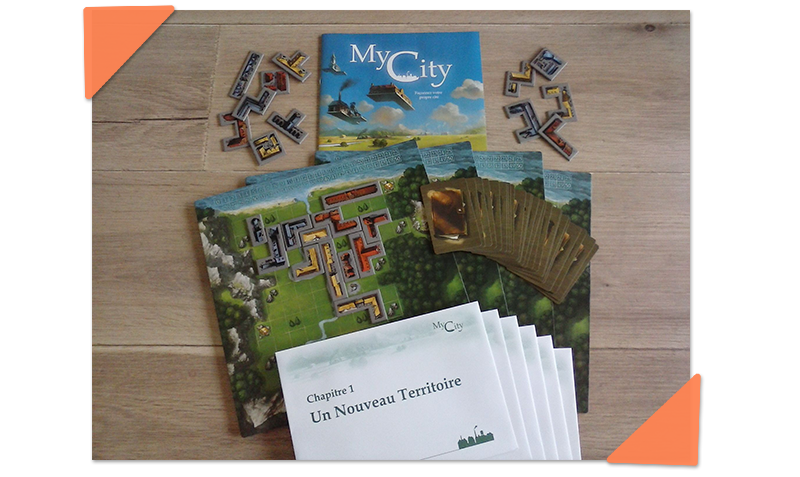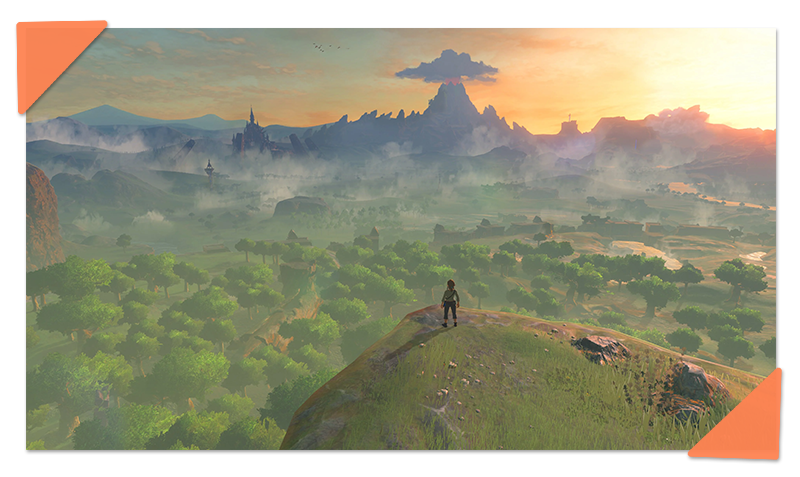Intro To Rational Game Design
The art of looking at game mechanics with a scientific lens to find variety.
Did you start to favour shorter games as you grew older?
It’s normal, adults have busy lives, and the idea of grinding a game for several dozen hours for months sounds exhausting. Despite this “popular opinion”, long games still have a massive advantage in our industry.
Hardcore gamers, those who spend the most, typically weigh in their purchases according to the value they perceive, and the ‘cost per hour’ is one of their most important criteria.
It’s nothing new: since the dawn of gaming, developers have had to develop strategies to lengthen the experience they produce. On the arcade, it was the absurd difficulty, then came optional objectives, completionism, multiplayer modes, grinding and many more.
In production, designers often have the hard job of finding ways to increase the game’s length without exploding the scope. With more mechanics, more game loops, the complexity increases exponentially, so you have to be smart about your approach.
How can we reuse mechanics to provide additional enjoyment? Where is the limit between meaningful variety and tedious repetitiveness? Where to invest efforts so a few new elements reinvigorate the previous content?
All these questions (and more) can be approached from a methodical perspective, and it has a name: rational game design.
What is Rational Game Design?
Rational game design has a vast and unclear definition, the industry is still young, and we don’t have a unified vocabulary yet here, so I’ll explain the concept the way it was taught to me ten years ago)
The basic idea behind the rational game design is to break down the rules & parameters of a mechanic to understand how each of these atomic components influences the final experience.
It’s a cold & clinical look at the software, which voluntarily avoids artistic or emotional opinions. Using this method helps to apprehend abstract concepts such as the variety or the difficulty progression. We could say that the rational game design is the flipside of the heuristic decision-making we intuitively resort to (”well, it seems a bit hard, maybe tone it down a little”).
Suppose, for instance, you’re a game designer in charge of proposing a diverse cast of enemies for a shooter game. The AI system is in place, with just placeholders, and now the directors want to see varied opponents. With the RGD method, you may start to identify their relevant characteristics: size, speed, resistance, etc. Of course, which parameters are interesting depends on your specific game mechanics: if the player can select from several ammo types, enemies could have weaknesses & resistances to the different types.
With those parameters in mind, you could propose a tank enemy which is huge & slow (easy target) but with a lot of HP and resistant to fire ammo. And also a rusher who’s weaker but moves fast. Those are two distinctive archetypes, challenging players differently yet using on the same system.
Enemies don’t have to be all balanced, of course, especially towards the end of the game: why not combine all difficult parameters at once? For example, we could propose one that’s very small and very slow but deals incredible damages: easy-to-neutralize taken alone but deadly in chaotic situations.
Of course, AI archetypes are indissociable from the levels you put them in, but you can apply the same method to them too (that’s rational level design): is the area narrow or open, how many covers does it have, how many enemies are combined, etc. With such an approach, you can ensure that the content you create is noticeably different from the previous and that difficulty & complexity rise over time.
Taking time to break down the parameters also allows you to spot unexplored design spaces. By flipping a standard rule (’enemies die when their health reaches zero’), you can often create unique mechanics for minimal cost (’one archetype explodes on death’ or even better ‘, one enemy heals its peers when it dies’). Using a rational design viewpoint helps to make games more cohesive and achieve more variety with fewer mechanics.
Tile Laying Core Gameplay
Now that we have the theory, let’s see the rational design in action in a simple yet highly varied game invented by no less than a (german) doctor in mathematics: MyCity from Reiner Knizia.
MyCity is a city-builder where players position buildings one after the other on their boards until they run out of place. There are only a handful of rules to respect: each building must touch one placed previously, and buildings can’t go across the river or be placed (even partially) on forests or mountains.
The goal is to have the most points at the end. You must fit buildings together in tight spaces to avoid the penalties (-1 per empty green square, or -2 if it has rocks). If you can leave the trees uncovered, they award a +2 bonus. During the game, skipping a building you can’t (or don’t want to) place, also gives a -1 penalty.
Since every player has the same set of pieces, they can plan ahead, but the random order can force them to re-evaluate strategies. The board is constrained and the odd shapes don’t fit all with one another, it’s an easy-to-understand challenge mixing strategy with a luck.
What elevates this not-too-original concept though (Blokus came 20 years before), is the campaign mode.
Indeed, in the box, you’ll find 8 chapters envelopes with new components & rules variants which tell you how each of the 24 episodes (=games) plays out. This type of board game is called “legacy”, a popular subgenre where you play several times and some of your choices have consequence on future games.
Legacy games typically use stickers to permanently change the boards & pieces. In MyCity, for instance, the winner of an episode will get a malus rock sticker while others get a bonus tree, an easy way to re-balance chances for future games and keep it competitive & fun for everyone.
So, as you chain games and open envelopes, you receive new stickers (and sometimes other bits such as cards or pieces), which add new mechanics & scoring rules. Churches, mines, rails: the way MyCity can effortlessly introduce novelty yet maintain its approachable gameplay is admirable.
It doesn’t seem like it, but being able to hook you to play the same simple game 24 times is quite the feat.
5 Strategies to Renew the Fun with RGD
In the final part, I’ll examine some of the RGD principles that Reiner Knizia used to add variety to its core system. I’m not sure he even calls it that, but judging by his background, I’m confident he has a methodical approach to game design.
#1 - Make promises (and keep them)
It sounds simple, yet it’s often forgotten: what pushes players to get invested in the whole campaign is the curiosity. What’s inside the next envelope, what do those symbols on the board means?
Having crazy varied mechanics isn’t going to help if players don’t stick with you, so tease, tease, tease! Don’t make false promises, just find ways to expose quikcly enough that there are lots of possibilities to come.
#2 - Expand & exploit the entire design space
As I explained, RGD is all about identifying relevant parameters of a mechanic to create variety, but at some point, you’ll reach limits regardless. The temptation in that case may be to invent another one but sometimes, introducing just one new parameter is enough.
In the game, the place-a-tile mechanic is enough to have scoring rules for:
Covering or not a square
Having a square surrounded on all four sides
Touching a side of the board
Touching the last-placed tile
Which is ok at first but needs to be deeper in the long term. So, Reiner Knizia separated the buildings into three colours (with the same shapes in each), and suddenly, this simple parameter opens a much greater variety potential:
Groups of the same colour
Surrounding a building with all three colours
Touching a tree with a specific colour
Biggest group overlapping a particular element on the board
You don’t need much to drastically increase the variety as long as you have good combinatory.
#3 - Change the context
Just like changing the level design can significantly influence how an AI is perceived, deviating from the usual context can greatly help the sense of variety.
In MyCity, most of the scoring depends on how you deal with your personal board (the norm), it has a bunch of multiplayer rules where the first to do X, gets a bonus over the others.
Another seemingly simple, yet exciting change, was when the game introduces a reward for surrounding a square with four red buildings that is an immediate tree sticker rather than points: technically, it’s similar to a +1 bonus (so not outstanding, given the efforts required), but it feels even better!
#4 - Shake the basic rules
To expand the previous point, another strategy used by Knizia to give a feeling of complete renewal is to make exceptions to the basic universal rules you learned at the very beginning: it immediately stands out by contrast.
For instance, at first, you are forbidden to place on the forest, but once you get the sawmill, it suddenly becomes allowed. You can skip all buildings except churches (which you start to dread seriously). Punctual exotic modifiers can have a fantastic effect.
#5 - Add (and remove) systems over time
And finally, one of the big lessons from MyCity comes from the organization of all those rules. It’s not nearly enough to generate tons of ideas; it’s also crucial to introduce them gradually, associate rules that work together or, on the contrary, eliminate some before they get too stale. RGD is a tool to maximize the sense of variety & progression, not a way to generate artificial complexity.
You can see on the graph below how mechanics are introduced and then disappear to make room for others. Subtractive design is sometimes scary (fear of losing depth), but it’s a powerful tool to make things feel different.
Wrap Up
As always when exploring such a complex topic in a single article, I feel like a drop way too many information at once. So, if you had to keep a single takeaway: rational game design is a powerful lens to maximize the potential of systems and ensure varied & progressive content.
It might be tempting to see it as a cheap way to create artificial variations (and it can be), but conversely, it’s an excellent method to design cohesive experiences which explore a system or a mechanic entirely.
If Nintendo approaches design from this perspective, I’m sure we can learn a thing or two.
If you liked the topic of this article, I’m sure you’d also enjoy this one:
















